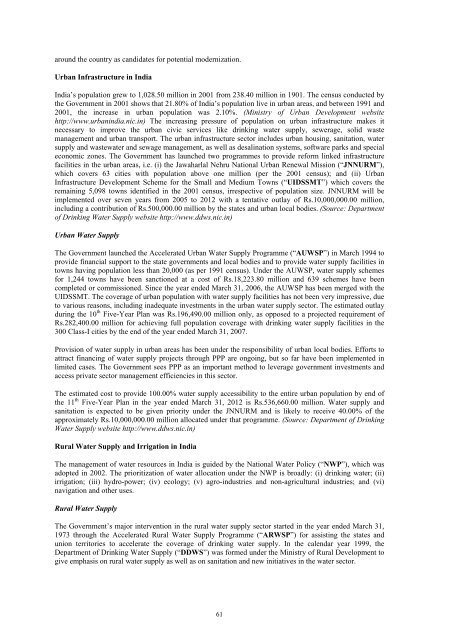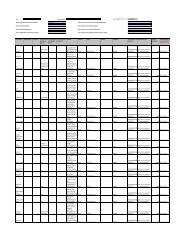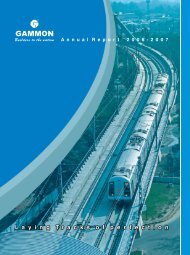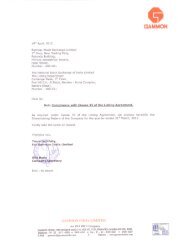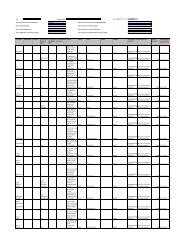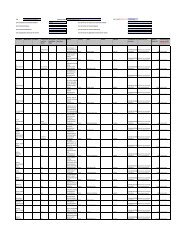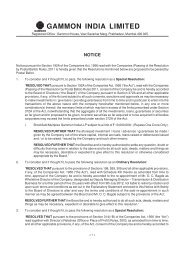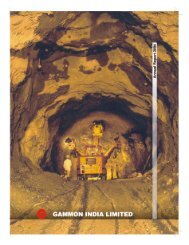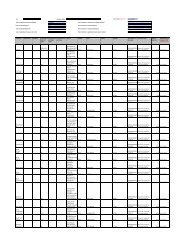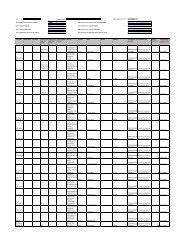GAMMON INDIA LIMITED
GAMMON INDIA LIMITED
GAMMON INDIA LIMITED
You also want an ePaper? Increase the reach of your titles
YUMPU automatically turns print PDFs into web optimized ePapers that Google loves.
around the country as candidates for potential modernization.<br />
Urban Infrastructure in India<br />
India’s population grew to 1,028.50 million in 2001 from 238.40 million in 1901. The census conducted by<br />
the Government in 2001 shows that 21.80% of India’s population live in urban areas, and between 1991 and<br />
2001, the increase in urban population was 2.10%. (Ministry of Urban Development website<br />
http://www.urbanindia.nic.in) The increasing pressure of population on urban infrastructure makes it<br />
necessary to improve the urban civic services like drinking water supply, sewerage, solid waste<br />
management and urban transport. The urban infrastructure sector includes urban housing, sanitation, water<br />
supply and wastewater and sewage management, as well as desalination systems, software parks and special<br />
economic zones. The Government has launched two programmes to provide reform linked infrastructure<br />
facilities in the urban areas, i.e. (i) the Jawaharlal Nehru National Urban Renewal Mission (“JNNURM”),<br />
which covers 63 cities with population above one million (per the 2001 census); and (ii) Urban<br />
Infrastructure Development Scheme for the Small and Medium Towns (“UIDSSMT”) which covers the<br />
remaining 5,098 towns identified in the 2001 census, irrespective of population size. JNNURM will be<br />
implemented over seven years from 2005 to 2012 with a tentative outlay of Rs.10,000,000.00 million,<br />
including a contribution of Rs.500,000.00 million by the states and urban local bodies. (Source: Department<br />
of Drinking Water Supply website http://www.ddws.nic.in)<br />
Urban Water Supply<br />
The Government launched the Accelerated Urban Water Supply Programme (“AUWSP”) in March 1994 to<br />
provide financial support to the state governments and local bodies and to provide water supply facilities in<br />
towns having population less than 20,000 (as per 1991 census). Under the AUWSP, water supply schemes<br />
for 1,244 towns have been sanctioned at a cost of Rs.18,223.80 million and 639 schemes have been<br />
completed or commissioned. Since the year ended March 31, 2006, the AUWSP has been merged with the<br />
UIDSSMT. The coverage of urban population with water supply facilities has not been very impressive, due<br />
to various reasons, including inadequate investments in the urban water supply sector. The estimated outlay<br />
during the 10 th Five-Year Plan was Rs.196,490.00 million only, as opposed to a projected requirement of<br />
Rs.282,400.00 million for achieving full population coverage with drinking water supply facilities in the<br />
300 Class-I cities by the end of the year ended March 31, 2007.<br />
Provision of water supply in urban areas has been under the responsibility of urban local bodies. Efforts to<br />
attract financing of water supply projects through PPP are ongoing, but so far have been implemented in<br />
limited cases. The Government sees PPP as an important method to leverage government investments and<br />
access private sector management efficiencies in this sector.<br />
The estimated cost to provide 100.00% water supply accessibility to the entire urban population by end of<br />
the 11 th Five-Year Plan in the year ended March 31, 2012 is Rs.536,660.00 million. Water supply and<br />
sanitation is expected to be given priority under the JNNURM and is likely to receive 40.00% of the<br />
approximately Rs.10,000,000.00 million allocated under that programme. (Source: Department of Drinking<br />
Water Supply website http://www.ddws.nic.in)<br />
Rural Water Supply and Irrigation in India<br />
The management of water resources in India is guided by the National Water Policy (“NWP”), which was<br />
adopted in 2002. The prioritization of water allocation under the NWP is broadly: (i) drinking water; (ii)<br />
irrigation; (iii) hydro-power; (iv) ecology; (v) agro-industries and non-agricultural industries; and (vi)<br />
navigation and other uses.<br />
Rural Water Supply<br />
The Government’s major intervention in the rural water supply sector started in the year ended March 31,<br />
1973 through the Accelerated Rural Water Supply Programme (“ARWSP”) for assisting the states and<br />
union territories to accelerate the coverage of drinking water supply. In the calendar year 1999, the<br />
Department of Drinking Water Supply (“DDWS”) was formed under the Ministry of Rural Development to<br />
give emphasis on rural water supply as well as on sanitation and new initiatives in the water sector.<br />
61


